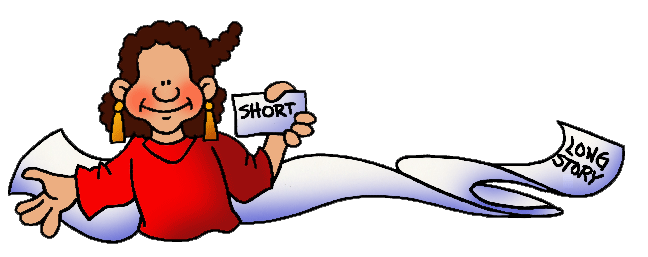If you like kick-ass heroines, who might happen to operate on the shady side of the law, you’ve come to the right place. As we get to know each other, I’ll introduce you to my characters via their stories — and between their stories, occasionally I’ll tell you a few of my own…
p.s. If you’re having trouble viewing some of the images on this site, it’s my fault, not yours. I’m pretty sure I toggled something during an update recently, and not quite sure what it is (the images appear on some browsers, but not others, and for the moment, the site still looks good on my phone. I’m so confused!). Apologies while we tear around in the walls and the wiring looking for the glitch… at least the text still appears to all be there, and it looks like the links are working.
For your summer reading pleasure…
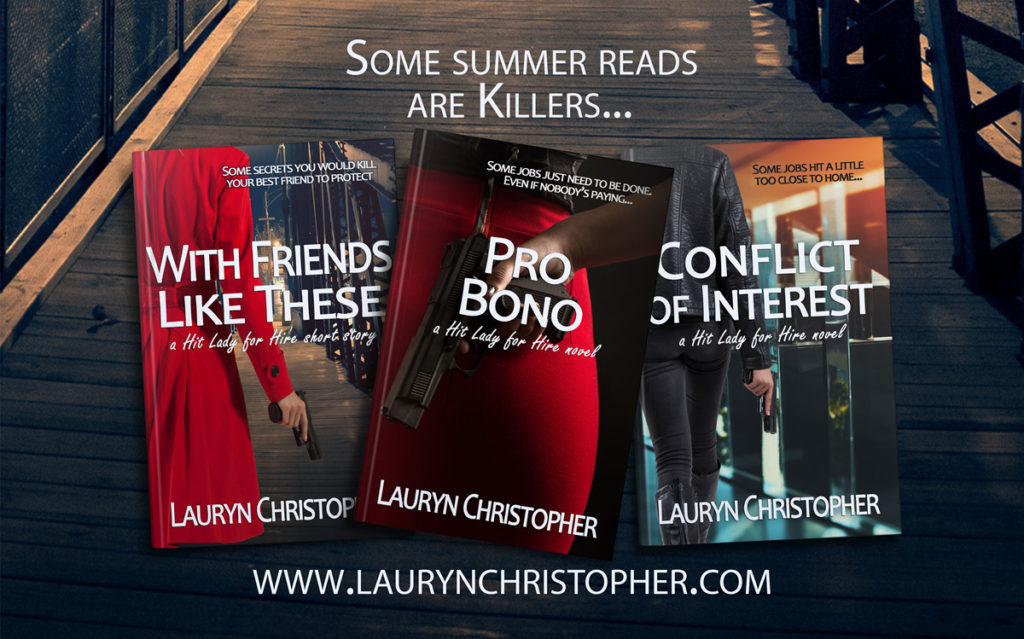
I’m thrilled to welcome the newest title to the Hit Lady for Hire family!
Pro Bono
Book #1 in the Hit Lady for Hire series
Now available on Amazon
(and coming soon in paperback and to other ebook retailers)
You didn’t read that wrong – I’ve tagged this as “book #1” in the series, because along with a compelling present-day story, Pro Bono answers questions so many of you have asked about how and why Meg became a hit lady. It just seemed right to *suggest* it as a starting point for the series.
Some jobs just need to be done – even if nobody’s paying…
When a friend is accused of murdering her deadbeat ex-husband – a man Meg had on her hit-list for reasons of her own – Meg Harrison sets aside her usual paid assassin’s role and takes it on herself to discover what really happened.
But what begins as a routine inquiry dredges up long-buried memories, forcing Meg to deal with her own demons while simultaneously hunt for a man her instincts tell her might not really be dead.
Can Meg reverse-engineer the murderer’s scheme and bring down the real killer before her friend becomes their next victim?
Pro Bono
I’ve been promising this one for a very long time – and love you all for being patient with me (the next one won’t take so long, I swear!)
Some jobs just need to be done –
even if nobody’s paying…
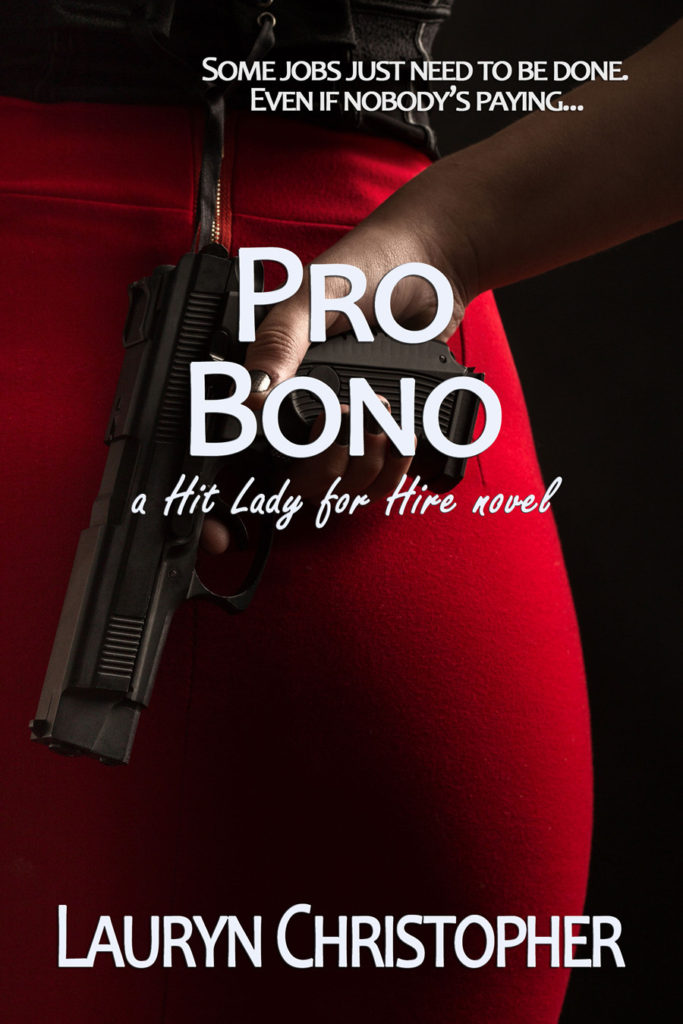
When a friend is accused of murdering her deadbeat ex-husband – a man Meg had on her hit-list for reasons of her own – Meg sets aside her usual paid assassin’s role and takes it on herself to discover what really happened.
But what begins as a routine inquiry dredges up long-buried memories, forcing Meg to deal with her own demons while simultaneously hunt for a man her instincts tell her might not really be dead.
Can Meg reverse-engineer the murderer’s scheme and bring down the real killer before her friend becomes their next victim?
Pro Bono
a Hit Lady for Hire novel
Available in print and ebook from your favorite online retailer
2019 Holiday Spectacular
I’m delighted to have a wicked little story in the the WMG Publishing Holiday Spectacular – a fiction-filled “advent calendar” giving readers a new story every day from Thanksgiving through New Year’s Day. (It’s not too late to subscribe – and they’ll make sure you get every story!).
Some of the Holiday Spectacular stories are sweet, some are very traditional, and others are… well… bloody. My contribution, Some Folks Just Need Killin‘, falls into this last category, of course, and introduces us to Ashley, a North-Texas barmaid with a holiday tradition you’ll die for…
Happy holidays!
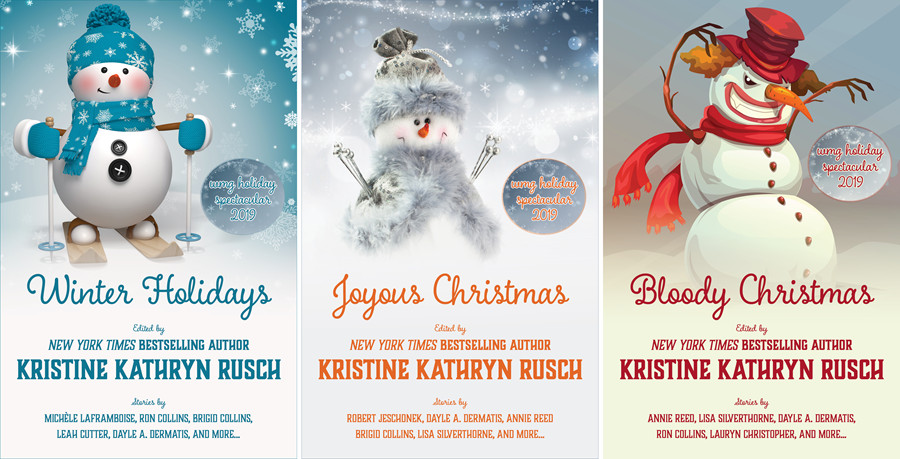
The value of short fiction
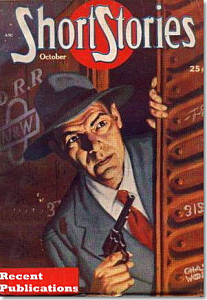 Some colleagues and I were recently discussing the relative value of short fiction (short stories, novelettes, and novellas) vs full-length novels. Much to my surprise, there were those who seemed to feel that short stories were of no particular value – one went so far as to suggest that the “lowly short story” was essentially a waste of a writer’s time, for a variety of reasons.
Some colleagues and I were recently discussing the relative value of short fiction (short stories, novelettes, and novellas) vs full-length novels. Much to my surprise, there were those who seemed to feel that short stories were of no particular value – one went so far as to suggest that the “lowly short story” was essentially a waste of a writer’s time, for a variety of reasons.
Yeah… you know me. I couldn’t leave that one alone, and because I feel so strongly that short stories are extremely valuable – both to readers and writers – I had to address the issues point-by-point.
Lowly Argument #1: Short stories are lowly in the author-recognition factor.
I have often read a short story, enjoyed it, and looked for more work by that author. As a reader, a short story is a great way to test the waters and see if I like a new-to-me writer’s work without the commitment of a full novel. As a writer, short stories are one of the best forms of author-advertising there is, for lots of reasons (see argument #4).
Lowly Argument #2: Short stories are lowly in the paid department, because the author gets no advance.
Sure, there are a lot of unpaid markets out there for short fiction, and most of the professional-paying short fiction markets will pay in the neighborhood of $.05-$.10 cents a word for a story between 3000-10000 words long (talking in averages here). So it doesn’t add up to a ton-o-bucks up front. But short fiction markets also only hold onto the rights for a very limited time (see argument #3 on contracts), and then the author can (and I have) sell reprint rights, put the short story up as an ebook at low or no-cost, offer it as an audiobook, etc., and continue earning from it.
As an example, “With Friends Like These” is a 10,000-word story I didn’t sell to a print market, but published directly as an ebook in 2010, and it’s been a consistent earner for me for nearly four years. Even at ebook royalty rates, it’s been a decent workhorse, in both the royalty dept. as well as in leading people to the companion novel, Conflict of Interest. I’ll be putting up another short in that same series this summer, in anticipation of the next book release in the fall. (see the previous topic: short stories as author-advertising)
And in the ROI department, it takes me so much less time to write a short story than a novel (orders of magnitude less!) that what I earn from a short story over its life is actually quite competitive with the earnings from a novel, in a strict, “dollars per hour” sense.
Lowly Argument #3: How about contracts?
What about the contracts? Short fiction markets in the US (whether print or online):
- typically ask for first world English rights for a limited period
- automatically revert the rights back to you after 6 mos – 2 yrs (depending on the publication)
- don’t ask for foreign and audio rights
- don’t ask for rights they’re not immediately using (i.e., a magazine doesn’t ask for anthology rights, etc.)
- don’t include non-compete clauses
- don’t require an agent/IP attorney to negotiate
- don’t include royalties, so no “reserve against returns” held back from your payment
- etc.
Personally, short fiction contracts are so straightforward and uncomplicated as to be a breath of fresh air.
Lowly Argument #4: You enjoy writing Short Stories, fine, but you should be using your time writing the book and promoting YOUR NAME.
Again (and in summary), short stories are a good way to:
- build name-recognition among readers
- keep your name visible between novels
- explore a story idea which may/may not turn into your next novel
- get to know a secondary character in greater depth
- give your new readers an introduction to your work
- give your current readers “cookies” to keep them excited about your work while waiting for the next novel
- build a collection you can eventually sell/self-publish to accompany your full-length novels
Lowly Argument #5: It all depends on what you want out of your writing.
And now we finally come to an argument I cannot refute!
If you enjoy reading/writing short stories, the more the merrier. There’s a wealth of material out there for you to enjoy. If you don’t enjoy reading/writing short stories, you’re under no obligation to either read or write them.
Of all the benefits of short stories, I think my favorite is the opportunity they give me to explore the side-streets of a larger work. I can get to know secondary characters or figure out more about a world I’m either developing or have already created.
It’s just my opinion here, on this blog, but I have to say it: short stories are FAR from lowly! And I fully intend to continue writing them.
– Lauryn
The mystery of marketing
Over the last few years, I’ve read numerous times that the only way for writers to sell is to promote, promote, promote their own work.
I’ve thought about this a lot, and decided to post some of those thoughts here because I wanted my own readers to know why I don’t bombard them with Amazon ads, barrage them with incessant Facebook and Twitter messages, send out postcards (although I will hand you a business card if I happen to meet you face-to-face), or do any of the number of other takes-time-away-from-writing activities that are all too often recommended – and often, it seems, required for writers to do.
* * *
In the middle of all the how-do-I-sell-my-book? brou-ha-ha, I’m starting to see more and more writers go back to the core of all book-marketing concepts:
“Write the best book you can, get it out there, and then write the next one.”
Yes, we absolutely want people to buy our book(s). But once we’ve hooked them, what next? They’ll spend a little of their precious time in the world we’ve created and – if we’ve done our job as writers – go looking for more. And if we, as writers, have been faithfully following the advice to spend our time on promotion – instead of writing – our want-to-be-loyal readers will come up empty-handed, call us a choice (and hopefully, creative) name or two, and move on to the next writer with a world they can immerse themselves in.
I don’t do a lot of promotion for my work – instead, I’m working on building up a collection of stories for my soon-to-be-amazing-fan following to find and drool over (I’m up to four titles in my Hit Lady for Hire series now, one long and three short, with another novel in progress).
In my opinion – and the opinion of more and more writers:
The best publicity for your book is your next book.
(Which is why I’m now going to get off the internet and get back to writing!)
Lies we tell ourselves
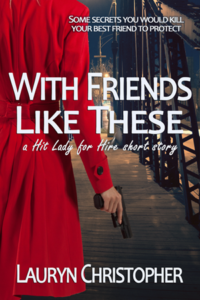 The short story, With Friends Like These, is what I would call a complicated story. Not so much in the plotline, which is fairly straightforward, as in the subtext – the emotional wringer that Meg is being squeezed through as events push her closer and closer to doing something she is dreading.
The short story, With Friends Like These, is what I would call a complicated story. Not so much in the plotline, which is fairly straightforward, as in the subtext – the emotional wringer that Meg is being squeezed through as events push her closer and closer to doing something she is dreading.
Perhaps it’s a way of trying to ignore what she knows is coming; maybe it’s something else – but on more than one occasion, Meg lies to herself (and to us) about who and what she is.
Meg tells herself that she’s not an assassin, even though she routinely takes on jobs that require her to kill people – a job she is able to do with cold efficiency. But as we see in both With Friends Like These and the novel Conflict of Interest, there are times when she isn’t comfortable with the assignments she’s been given.
Meg also tells herself she’s amoral, usually refusing to acknowledge her own peculiar brand of morality because she sees it as a potential weakness to someone in her line of work – but it is this inner morality that inspires her to help Liz the way she does (no spoilers here, but you’ll understand if you read the story).
Meg enjoys her work. Most of the time. With Friends Like These is the story of one of the assignments she would have preferred to avoid. It throws her into emotional places she doesn’t like to go, leaving her raw and vulnerable. And, as she says in the story:
“…I was angry with everyone I met or talked to or even knew existed. I wasn’t myself. And in my line of work, that’s not something you can afford. It makes you careless…”
Meg is a character I’ve enjoyed getting to know – a person with a difficult past that has shaped the strong woman she’s become. I like writing about her, and plan to write more of her stories in the future. Hopefully, that’s what you wanted to hear!
Shades of Gray … the Anti-Hero
In most crime and mystery fiction, it’s pretty easy to spot the hero/heroine.
She’s the person in the wrong place at the wrong time, who often finds herself in some sort of peril, but, in spite of all odds, manages to rout the bad guy in the end.
He’s the intrepid investigator/police detective/average Joe, who hunts down the villain with steely-eyed determination and a resolve to see justice prevail.
Villains aren’t always quite so readily apparent, but are seldom the mustachioed characters we remember from Saturday morning cartoons.
They’re more often chameleon-like, with textures and variations that make them sometimes difficult to spot amid the Rogue’s Gallery of shady characters populating the pages of the story. But while each of these individuals may have had some combination of means, motive, and opportunity to have committed the crime-in-question, the villain is ultimately revealed – and usually captured – as the one who acted on their darker impulses as the story progresses.
Yes, I’m generalizing on the stereotypes, but since it’s so easy to identify the stereotypical heroes and villains, it should be just as easy for us to recognize the anti-hero, right?
Not always.
When I wrote Conflict of Interest, I didn’t at first realize that the main character, Meg, was an anti-hero. After all, she’s an assassin – not a typical hero’s profession; on the other hand (keeping spoilers to a minimum here), she actually chooses some heroic-type actions through the course of the story.
It was a fellow writer who read an early draft and pointed out that by telling the story from the assassin’s point of view, I’d entered the gray area and gritty streets inhabited by the anti-hero.
Of course, that suits me just fine. Meg is a complicated person, a woman with a dysfunctional past that has molded and shaped her into the person she is – someone who can kill quickly and efficiently when the need arises, who is not above selling secrets or using what she’s learned to her own advantage or to suit her purposes. At the same time, there’s a core of humanity in her that she frequently fails to recognize – a fierce loyalty to her few friends, a protective nature that asserts itself when she volunteers at a self-defense class or invests her ill-gotten gains in underdeveloped communities.
In her own stories, Meg never sees herself as the hero, but she doesn’t consider herself to be the villain, either. In her matter-of-fact way, she’d tell you that she’s just there, doing what needs to be done. A loner, a person who gets her hands dirty because there’s a job that needs to be done, and she’s not afraid of doing it.
Just don’t ask her to think too much about it.
 “In the real world there are no villains. No one actually sets out to do evil. Fiction mirrors life. Or, more accurately, fiction serves as a lens to focus what we know of life and bring its realities into sharper, clearer understanding for us. There are no villains cackling and rubbing their hands in glee as they contemplate their evil deeds. There are only people with problems, struggling to solve them.”
“In the real world there are no villains. No one actually sets out to do evil. Fiction mirrors life. Or, more accurately, fiction serves as a lens to focus what we know of life and bring its realities into sharper, clearer understanding for us. There are no villains cackling and rubbing their hands in glee as they contemplate their evil deeds. There are only people with problems, struggling to solve them.”
–Ben Bova
A bit of fun
My husband and I randomly happened to pick up “Wild Target” from Blockbuster yesterday – not sure why (the cover image caught my attention, the blurb hooked me…sound familiar?)
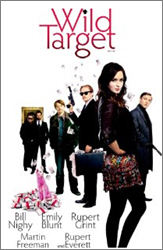 The movie is based on the 1993 French film Cible Emouvante (which I’d never heard of before, and, not being fluent in French, will probably never see). It’s about an assassin (Bill Nighy) with a problem: He didn’t kill his target (Emily Blunt) quickly enough, and now he’s not so sure he wants to – although there are times when she pushes him almost to the edge in spite of himself. Toss in an accidental apprentice assassin (Rupert Grint), a bad guy with the worst taste in thugs, and an aging mother who has lovingly scrapbooked all of the assassin’s kills, and the movie could have very easily gone over the top into ridiculousness at many points along the way.
The movie is based on the 1993 French film Cible Emouvante (which I’d never heard of before, and, not being fluent in French, will probably never see). It’s about an assassin (Bill Nighy) with a problem: He didn’t kill his target (Emily Blunt) quickly enough, and now he’s not so sure he wants to – although there are times when she pushes him almost to the edge in spite of himself. Toss in an accidental apprentice assassin (Rupert Grint), a bad guy with the worst taste in thugs, and an aging mother who has lovingly scrapbooked all of the assassin’s kills, and the movie could have very easily gone over the top into ridiculousness at many points along the way.
But it didn’t.
The DVD cover blurb bills the film as “…a dangerous comedy…” and while the action is not intense and the suspense low-key, the humor is in a dry, British style that is perfectly timed. The dialog is sharp and crisp, and even when you know what’s going to happen next, you don’t care, because you’re so engaged with *how* they do it.
I don’t recommend movies often, but this was well-written and great fun. If this were a review site, I’d give it five stars. Enjoy!
Wild Target Bill Nighy, Emily Blunt, Rupert Grint Honest Engine Films, 2010Life’s Little Mysteries
It’s spring-cleaning time (yeah, I’ve been putting it off for as long as possible), and I am once again amazed at the places in my house that manage to accumulate cat hair when I’m not looking.
Like the top of the fan blades.
It was warm over the weekend, which prompted me to turn on the ceiling fan (it’s still too early to turn on the A/C). And as the blades slowly began to turn, a thin film of dust and unmistakable wisps of cat hair began to float down on the gentle breeze. Yech!
I forget that dust settles on the fan blades during the winter. They’re up over my head and not on my weekly dusting routine (out of sight [overhead], out of mind). And every spring I find myself wondering how the cat hair – which I’m used to vacuuming off the couch and the carpet and every other horizontal surface in the house – manages to find its way up onto the fan blades.
It’s one of life’s little mysteries…meow.

